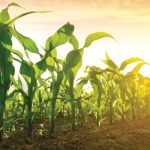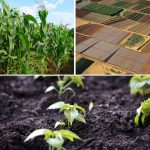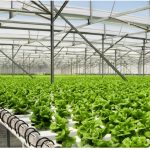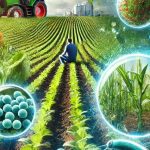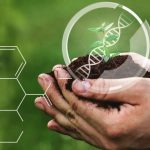Agricultural Biologicals Market Size and Forecast
The Agricultural Biologicals Market size is expected to experience substantial growth over the coming decade, with a projected market value of USD 33.52 billion by 2030, up from USD 12.3 billion in 2022, growing at a compound annual growth rate (CAGR) of 13.4%. Several factors, including growing environmental and health concerns, government initiatives, and increasing demand for organic farming practices, drive this growth. Agricultural biologicals refer to products derived from natural organisms or their components, such as biopesticides, biofertilizers, biostimulants, and other biological agents that help farmers manage pests, improve soil health, and increase crop yield without relying on synthetic chemicals.
Conventional farming practices, which heavily rely on synthetic pesticides and fertilizers, are facing increasing challenges, including pest resistance, soil degradation, and a harmful impact on ecosystems. This has led to an increasing preference for agricultural biologicals, as they offer sustainable and eco-friendly alternatives to traditional chemicals. In addition to their ability to protect crops and improve yields, these products are also viewed as essential for meeting the growing demand for organic produce, driven by consumer health awareness and regulatory requirements aimed at reducing synthetic chemical residues in food.
Government policies worldwide are further supporting the transition toward biological solutions in agriculture. For example, initiatives such as India’s Pradhan Mantri Krishi Sinchai Yojana (PMKSY) and the National Mission on Sustainable Agriculture (NMSA) promote the use of non-toxic, sustainable agricultural practices, including the application of biologicals. These programs focus on enhancing soil health and crop yields while minimizing environmental damage, aligning with the global trend of improving agricultural sustainability.
Technological innovations, particularly in Artificial Intelligence (AI), are also accelerating the development and adoption of agricultural biologicals. AI is helping researchers identify new natural compounds and microorganisms with potential agricultural benefits. It also enhances the efficacy of these products by analyzing large datasets on soil health, pest outbreaks, and crop conditions, enabling more targeted and efficient applications. AI is enabling real-time monitoring and analysis, further enhancing the accuracy and effectiveness of biological applications in the field.
Download Sample Report PDF (Including Full TOC, Table & Figures) @ https://www.vantagemarketresearch.com/agricultural-biologicals-market-1049/request-sample
List of the Top Key Players in the Agricultural Biologicals Market:
- BASF SE (Germany)
- Syngenta (Switzerland)
- Marrone Bio Innovation (U.S.)
- Isagro SPA (Italy)
- UPL Ltd. (India)
- Evogene Ltd. (Israel)
- Bayer AG (Germany)
- Vegalab (Switzerland)
- Valent LLC (U.S.)
- Stockton Bio AG (Israel)
- Biolchim (Italy)
- Rizobacter Group (France)
- Valagro (Italy)
- Koppert Biological Systems (Netherlands)
- Lallemand (Canada)
- Symborg (Spain)
Market Dynamics
Drivers: Rising Trend for Organically Produced Foods
A significant driver of the agricultural biologicals market’s growth is the increasing consumer demand for organic and residue-free foods. Consumers are increasingly concerned about the health and environmental impacts of synthetic chemicals used in conventional farming. As a result, there is a growing preference for food that is produced without the use of harmful pesticides and fertilizers. This shift toward organic agriculture is creating demand for biological alternatives such as biopesticides, biofertilizers, and biostimulants, which help farmers manage pests, improve soil health, and increase yields while adhering to organic farming standards.
As global awareness of environmental issues grows, many governments are implementing policies that encourage the use of biological solutions. Reports from organizations such as the Research Institute of Organic Agriculture (FIBL) and IFOAM Organics International indicate that global organic food sales reached USD 120 billion in 2022, with the highest demand originating from Europe and North America. This growth is expected to continue, further fueling the agricultural biologicals market as farmers seek to meet the regulatory requirements for organic certification while also catering to the increasing demand for organic products.
Restraint: Slow and Variable Performance
Despite their benefits, agricultural biologicals face several challenges that hinder their widespread adoption. One of the primary limitations is their slow and variable performance compared to traditional chemical products. Biologicals are derived from living organisms or natural substances, and their effectiveness can be influenced by environmental factors such as temperature, humidity, and soil type. This variability can lead to inconsistent results, making them less reliable than synthetic pesticides and fertilizers that tend to offer quick and uniform action.
Moreover, the application of biological products often requires a higher level of expertise and careful management. Unlike chemical products, which have well-established application protocols, biologicals may require precise timing and conditions to be effective. This can be a barrier for farmers who are accustomed to using chemical inputs, as they may lack the necessary knowledge or infrastructure to utilize biological solutions effectively.
Opportunity: Advancements in Microbial and Biotechnological Research
Technological advancements in microbial and biotechnology research present a significant opportunity for the agricultural biologicals market. Researchers are making significant strides in improving the efficacy, stability, and scalability of biological products. Innovations in microbial strain improvement, genetic modification, and the development of multi-strain microbial consortia are resulting in more potent and stable biopesticides, biofertilizers, and biostimulants. These advancements are helping biological products perform consistently across a wide range of environmental conditions.
Furthermore, advancements in formulation technologies are addressing many of the challenges faced by agricultural biologicals, such as short shelf life and sensitivity to environmental conditions. New controlled-release mechanisms and delivery systems ensure that active ingredients are delivered precisely when and where they are needed, increasing the commercial potential of these products. These technological improvements are making agricultural biologicals more appealing to farmers and are expected to drive faster adoption in the years to come.
Challenge: High Demand for Agrochemicals and Low Awareness
In emerging markets, the high demand for conventional agrochemicals continues to pose a significant challenge for the agricultural biologicals industry. Farmers widely accept agrochemicals due to their effectiveness, affordability, and long-standing presence in the market. In many developing countries, farmers continue to prioritize high-yielding and fast-acting chemical solutions to meet the growing demand for food production.
Furthermore, there is still limited awareness and understanding of agricultural biologicals, particularly among smallholder farmers. The lack of knowledge about how to properly apply biological products, combined with infrastructure challenges such as inadequate storage and distribution systems, hinders these products from reaching their full market potential. Educating farmers, improving access to biological solutions, and providing technical support will be key to overcoming these barriers and accelerating the growth of the agricultural biologicals market in developing regions.
Take Action Now: Secure Your Position in the Global Agricultural Biologicals Industry Today – Purchase Now.
Global Agricultural Biologicals Industry Ecosystem
The agricultural biologicals market ecosystem is diverse, encompassing a wide range of stakeholders, including manufacturers, suppliers, researchers, regulatory bodies, and farmers. Prominent players in the market include companies such as BASF SE (Germany), Syngenta (Switzerland), Marrone Bio Innovation (U.S.), Isagro SPA (Italy), and UPL Ltd. (India), among others. These companies are focusing on expanding their product portfolios, investing in research and development (R&D), and forging strategic partnerships to strengthen their market positions.
A growing trend in the market is the increasing use of semiochemicals, which are derived from natural chemicals released by organisms to facilitate communication among them. Semiochemicals such as pheromones and allelochemicals are gaining popularity in integrated pest management (IPM) programs because they offer a targeted and environmentally friendly approach to pest control. Semiochemicals can disrupt pest mating behaviors, attract natural predators, or repel harmful insects, reducing the need for synthetic pesticides.
Another emerging segment in the agricultural biologicals market is the use of biologicals for fruits and vegetables. The demand for organic, pesticide-free produce is driving the adoption of biological solutions in the cultivation of high-value crops, including fruits and vegetables. As consumers become more aware of food safety and sustainability, they are demanding crops that are free from harmful chemical residues, prompting farmers to adopt biological crop protection measures.
Segmentation of the Global Agricultural Biologicals Market
By Product
- Biopesticides
- Bio Stimulants
- Biofertilizers
- Other Products
By Application Method
- Foliar Spray
- Seed Treatment
- Soil Treatment
- Post-harvest
By Crop Type
- Cereals & Grains
- Oilseeds & Pulses
- Fruits & Vegetables
- Other Crop Types
By Region
- North America
- Europe
- Asia Pacific
- Latin America
- Middle East & Africa
For the Agricultural Biologicals Market Research Report and updates, view the full report now!
Conclusion
The agricultural biologicals market is poised for significant growth in the coming years, driven by increasing demand for organic and sustainable farming practices, advancements in biotechnology, and the need for alternative pest management solutions. While challenges such as slow and variable performance, as well as high demand for agrochemicals, remain, the market is expected to expand rapidly as technological innovations improve the efficacy and accessibility of biological products. By addressing barriers to adoption and capitalizing on growing consumer demand for residue-free food, the agricultural biologicals market will play a pivotal role in shaping the future of sustainable agriculture.
FAQ.
- What are agricultural biologicals, and how do they differ from chemical pesticides?
- What are the key drivers of growth in the agricultural biologicals market?
- How do biopesticides, biofertilizers, and biostimulants work to improve crop production?
- What are the challenges farmers face in adopting agricultural biologicals?
- How does AI contribute to the development and effectiveness of agricultural biologicals?
- What regulatory policies are driving the adoption of biological products in agriculture?
- What are the primary factors limiting the widespread use of agricultural biologicals?
- Which regions are expected to see the highest growth in the agricultural biologicals market?
- How does the demand for organic food impact the agricultural biologicals market?
- What are some of the most prominent companies in the agricultural biologicals industry?
![[Market Research Reports] – Research Google News Blog | VMR.Biz](https://www.vmr.biz/wp-content/uploads/2022/12/logo-removebg-preview.png)




